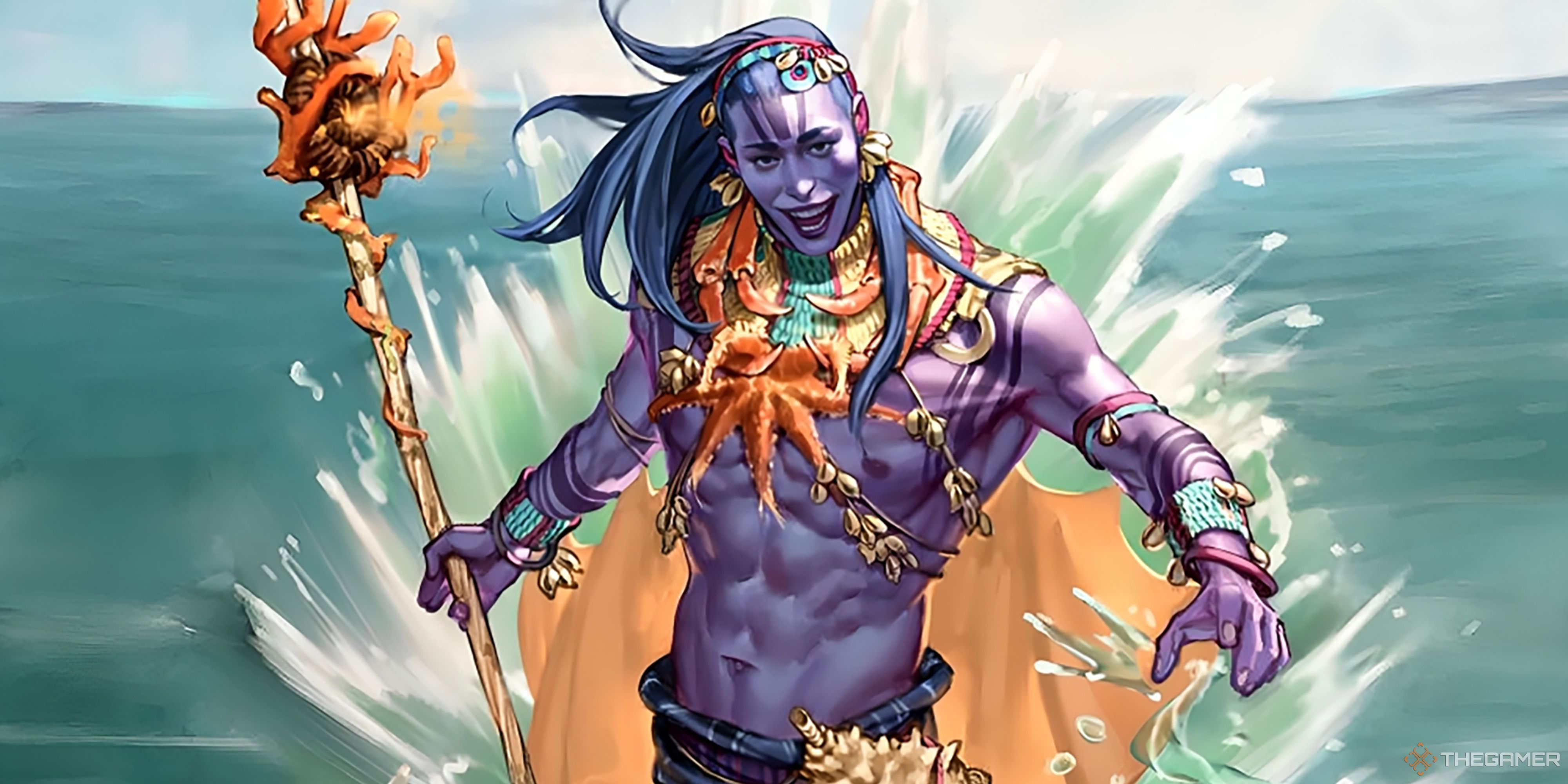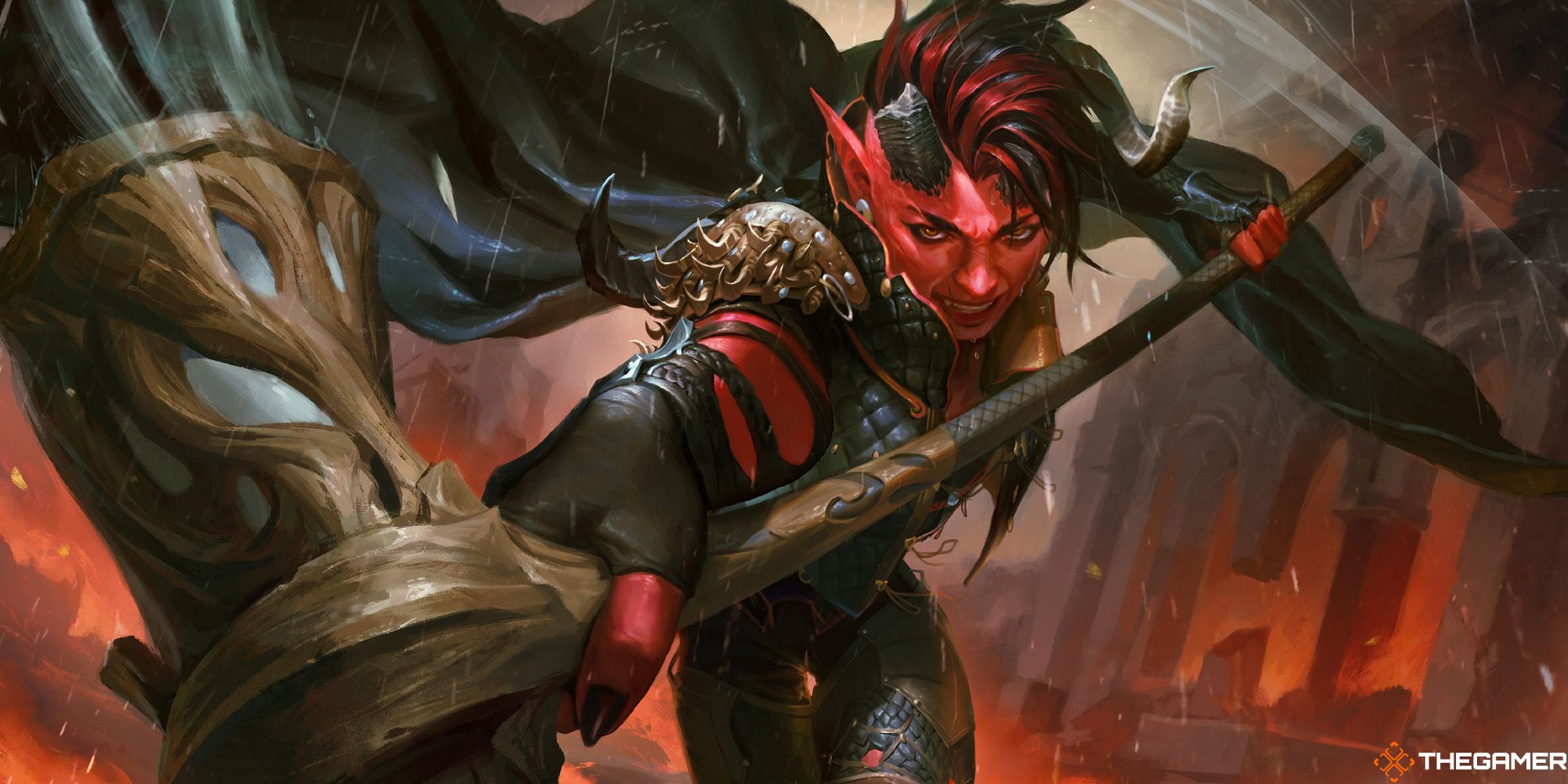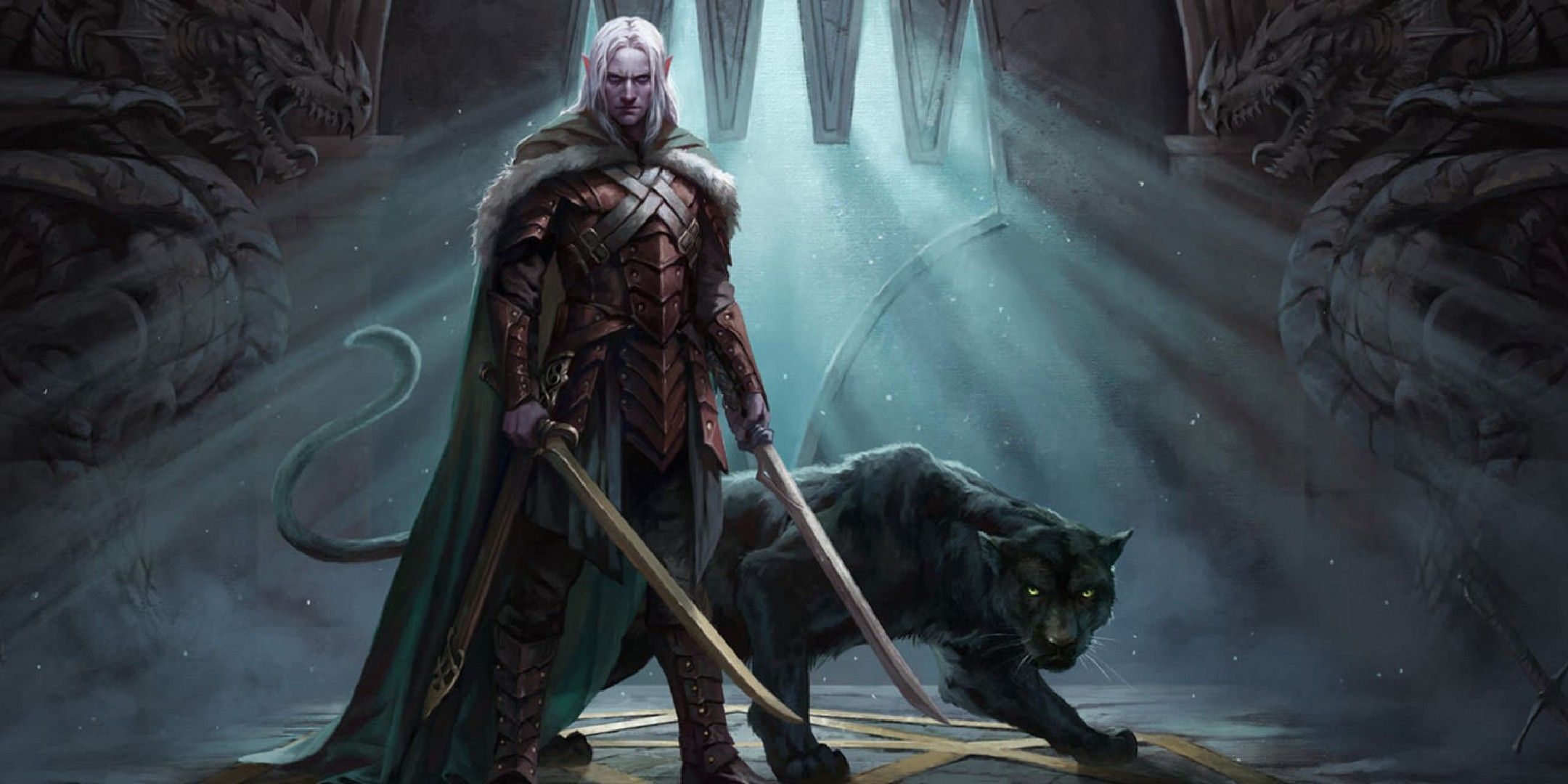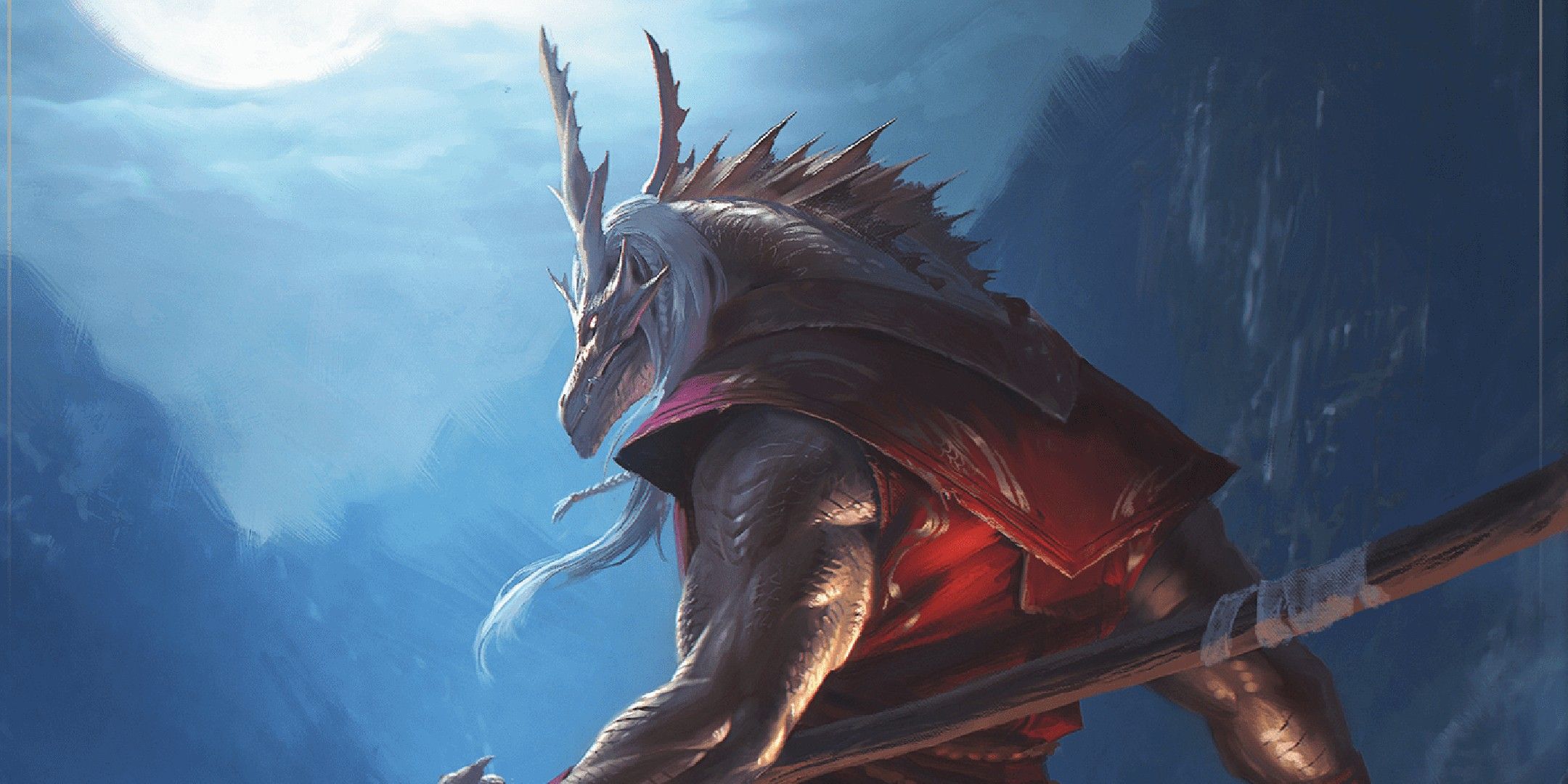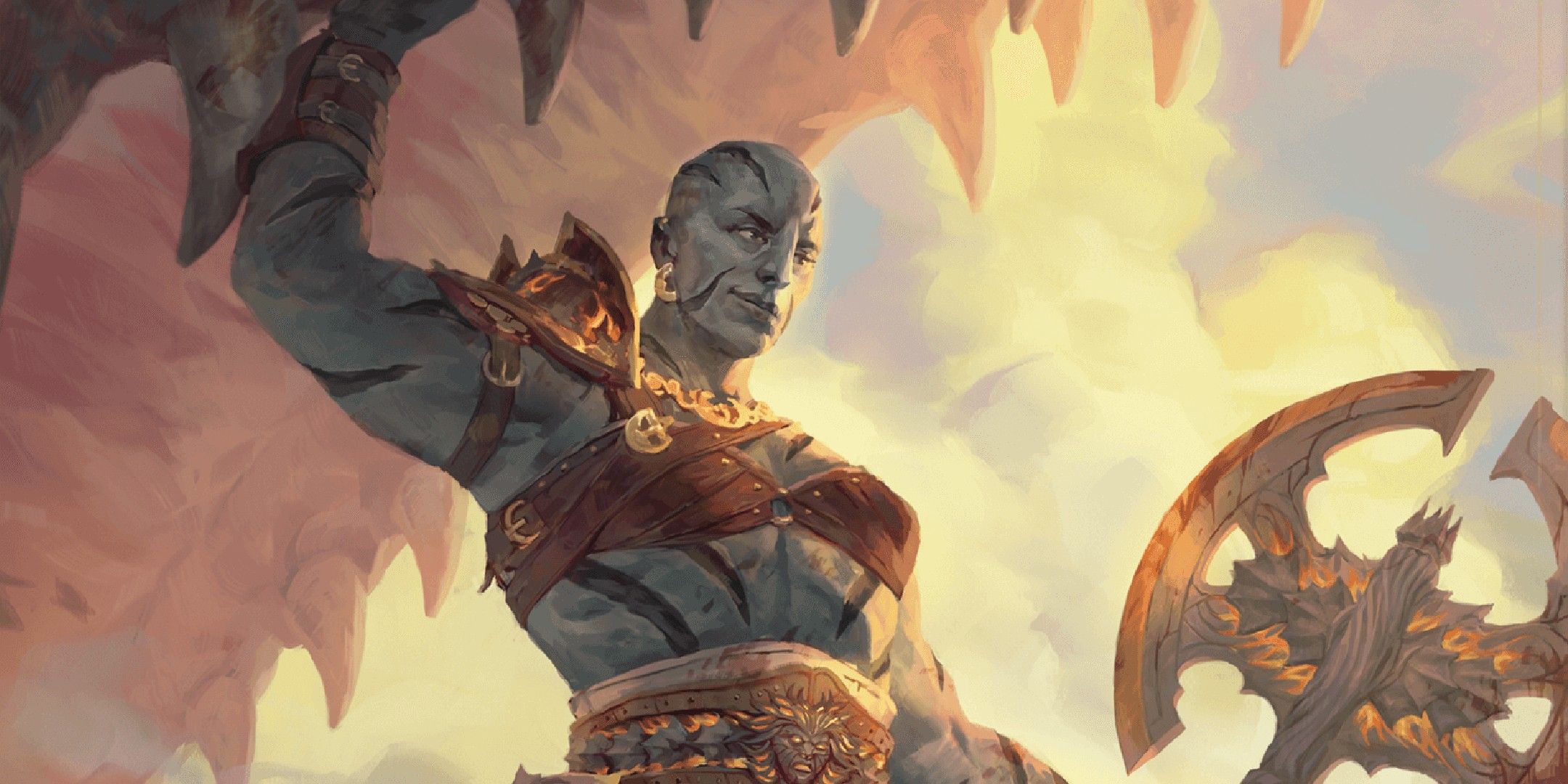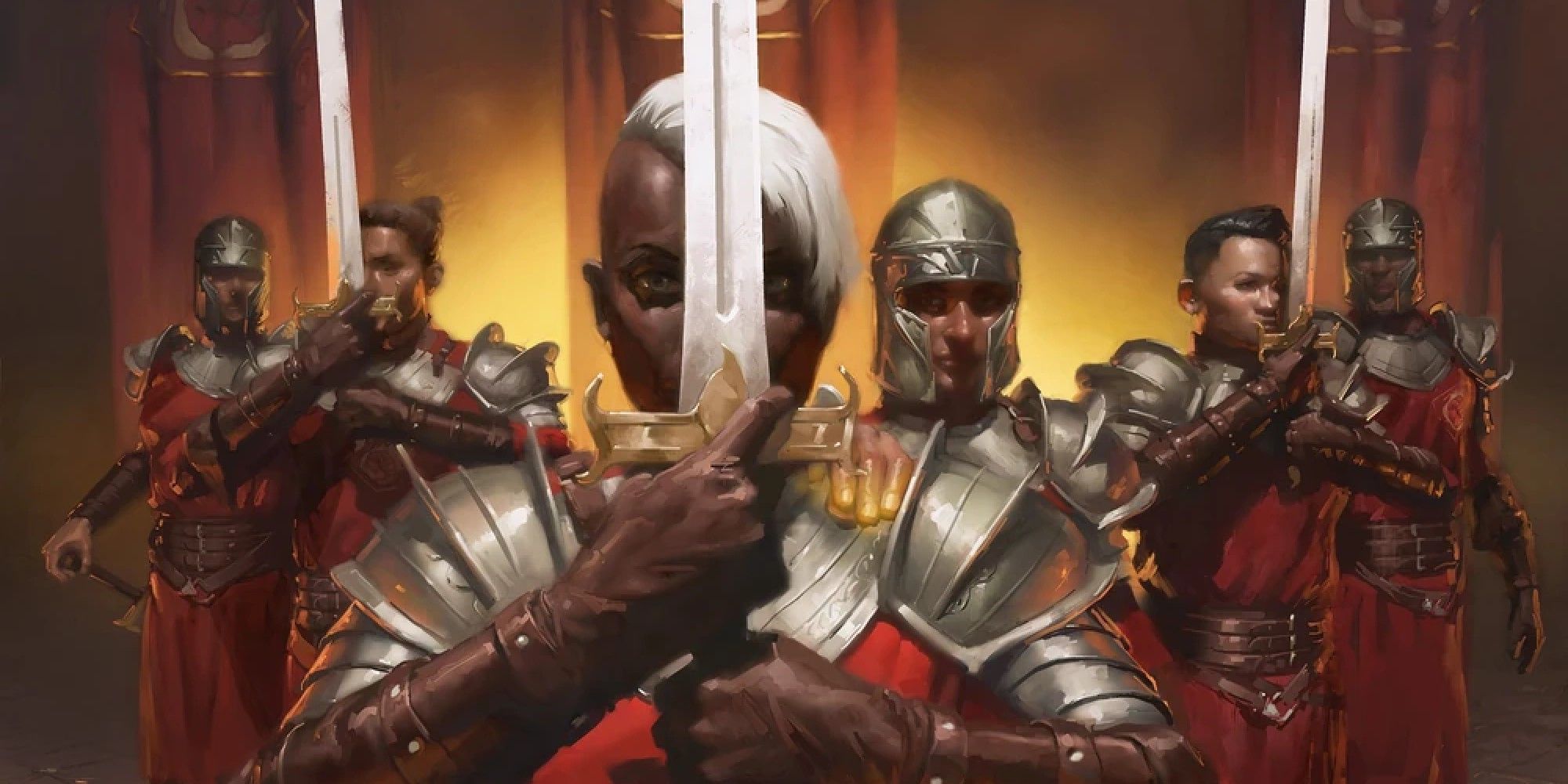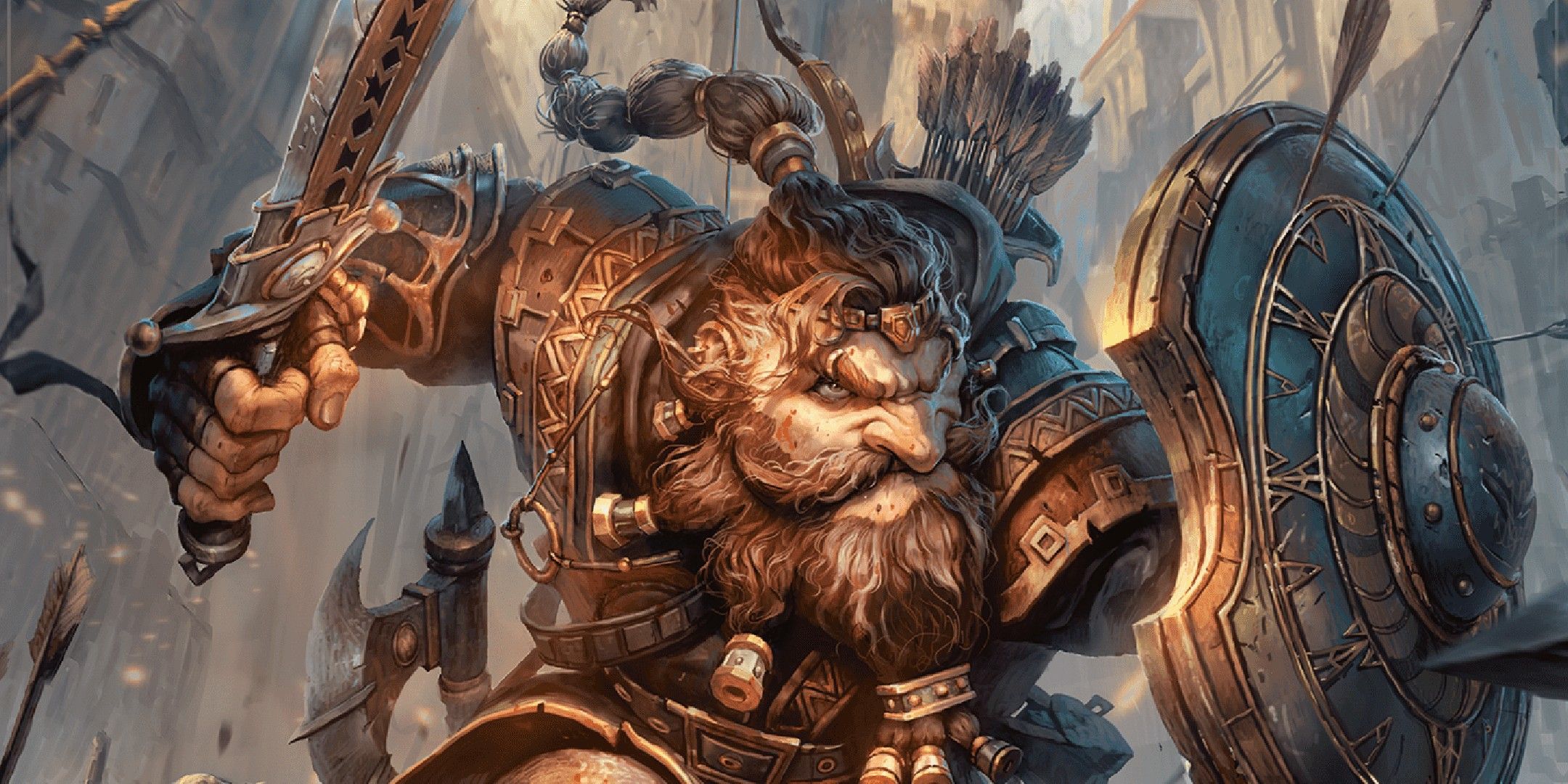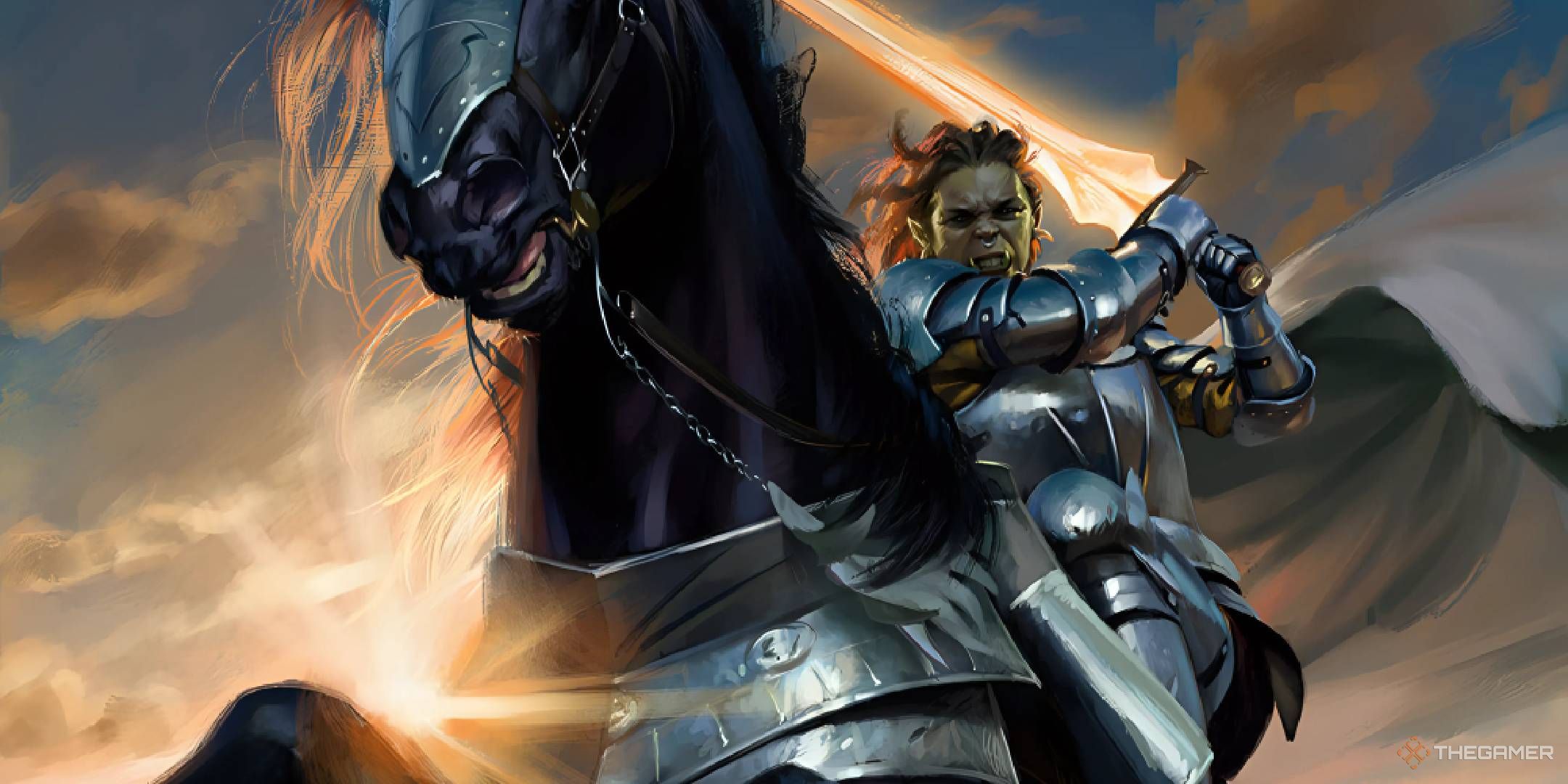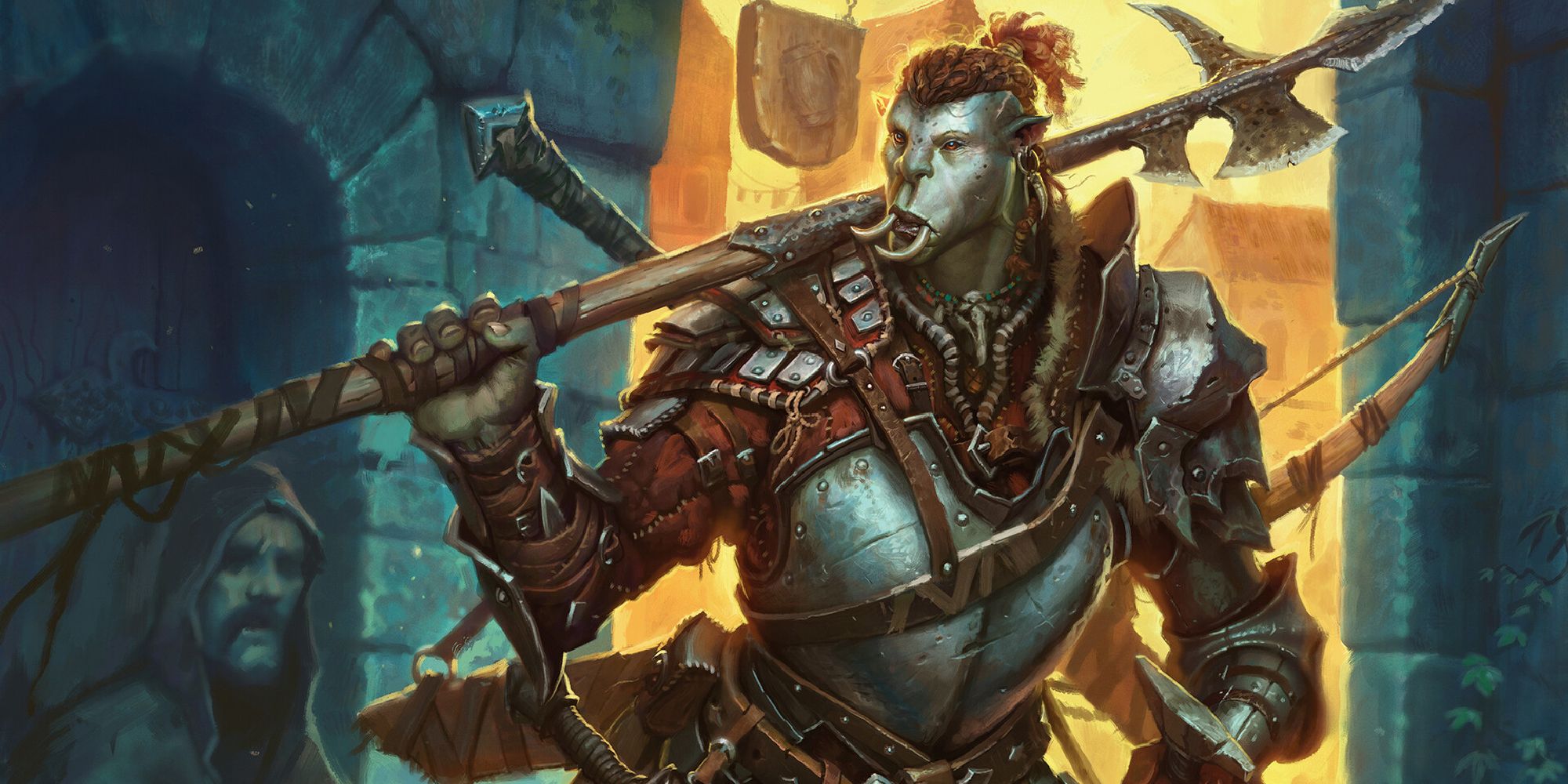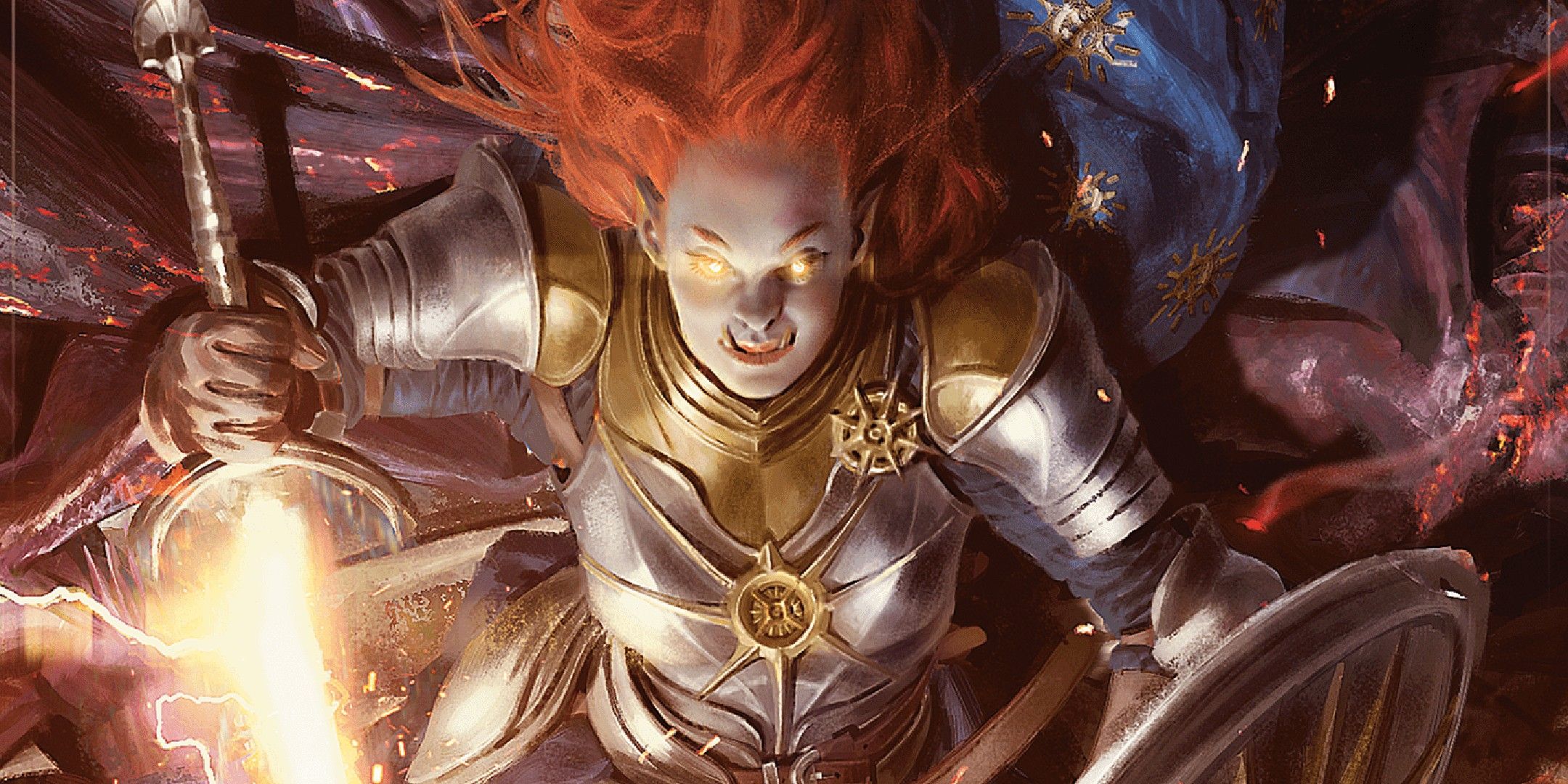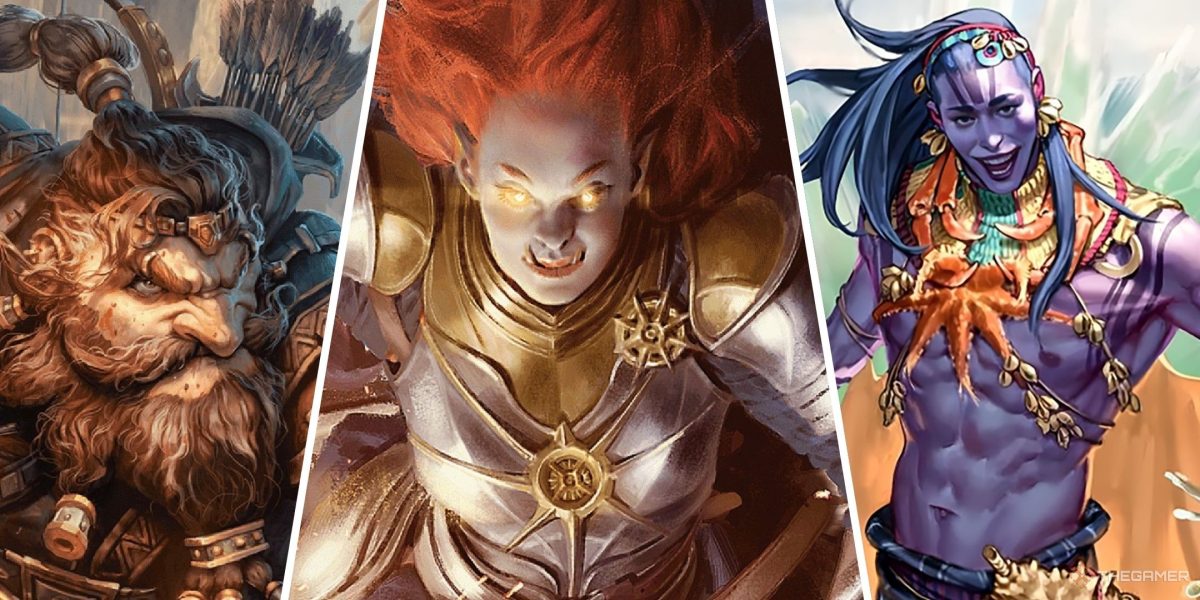
Best Feats That Increase Strength In DND
Key Takeaways
- When leveling up in Dungeons & Dragons, choose between two ability score points or a feat, with some feats giving a +1 to your strength.
- Half-Feats offer a +1 to an ability score, so ensure your Strength is an odd number for optimal benefit.
- Consider feats like Athlete, Grappler, and Great Weapon Master to enhance combat abilities and Strength bonuses.
When your character reaches certain levels in Dungeons & Dragons, you’ll have an important choice to make. You can get yourself two points to add in an ability score of your choice or a feat, which can give you powerful new mechanics to use in combat or other situations.
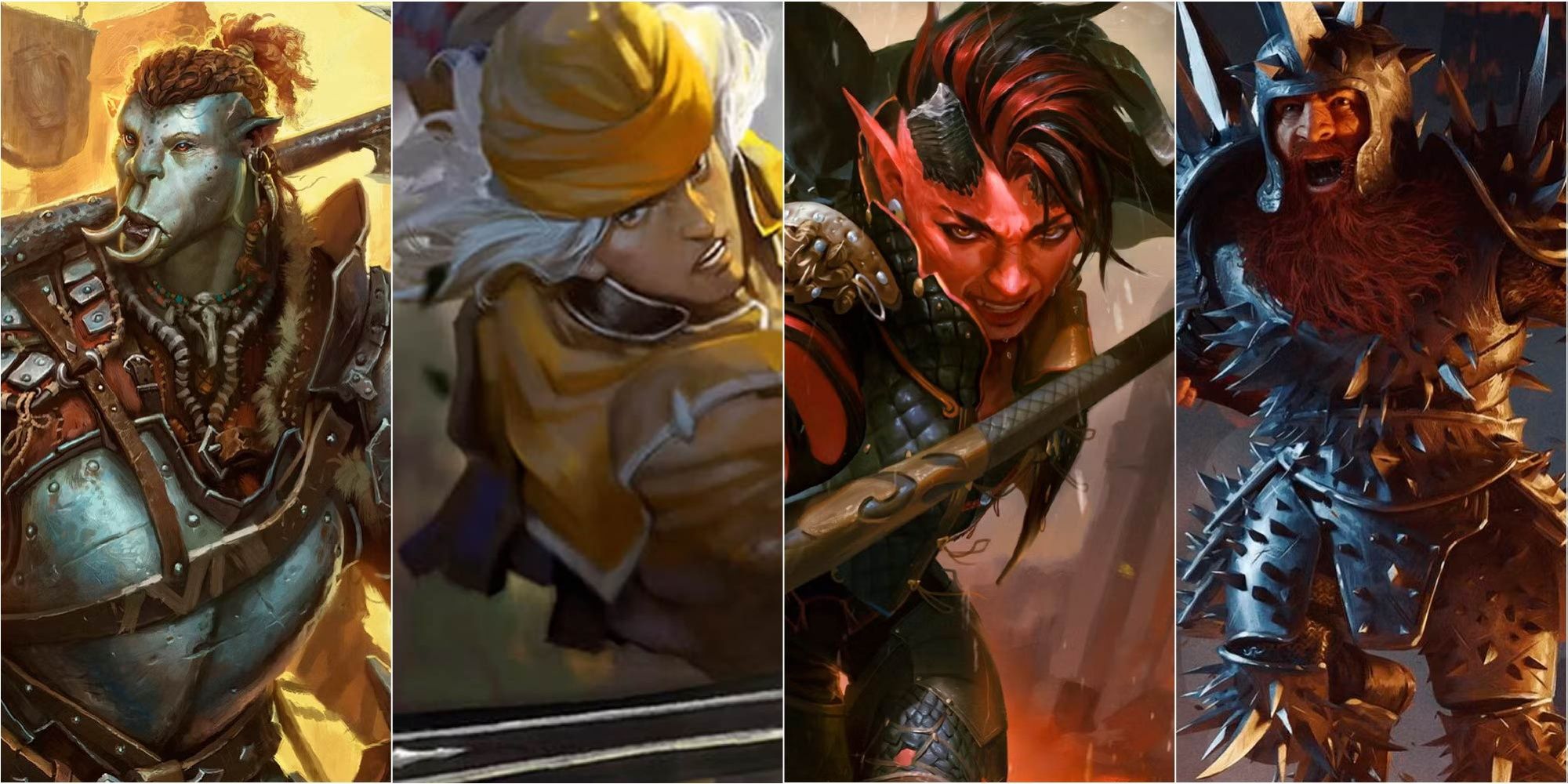
Related
Dungeons & Dragons: The 10 Best Feats For Melee Characters
Improve your melee fighting game in Dungeons & Dragons by picking the best feats for your more martial-focused characters.
However, among these feats, there are some known as ‘Half-Feats.’ They’re weaker than other feats, but they compensate by still giving you a single point to add to one ability score, meaning you can increase it while still getting extra perks. Which ability score depends on the Half-Feat, so we’ll focus on the ones that improve your Strength bonus for now.
If you intend to get one of these, make sure your Strength is at an odd number. For example, there’s no bonus difference between a 16 and a 17 to your Strength, so a +1 won’t make a difference on a 16, but if your Strength is 17, it’ll turn into an 18, increasing the bonus.
Updated on November 1, 2024, by Lucas Olah: The 2024 Player’s Handbook has reorganized feats a bit, and with this reorganization, there’s a whole new category called the General Feats. Each of these can give you a +1 bonus to an ability score, which means we now have a lot more feats that give you a +1 to your strength. So, we’ll tell you which feats we recommend so you can see if they fit your character. As for feats that were updated, we’ll add a tag to show you if we recommend the new version of the feat or the legacy version – aka the version that came before the 2024 book.
10
Athlete
Fall Seven Times, Stand Up Eight
- Best Version: Both versions are equal.
Strength and mobility are the focus of this feat, with abilities that can be considered situational, but they are helpful when it comes up. Along with the +1 Strength bonus (though you can add it to your Dexterity instead), climbing won’t cost you extra movement.
You’ll also be able to stand up from being prone at the cost of five feet/1.5 meters of movement instead of half, and you’ll be able to perform long jumps after running five feet/1.5 meters instead of the average ten feet/three meters.
By far, the most useful of these traits is not losing half of your movement just to stand up. This can be a marvel for melee characters, allowing you to keep your maneuverability even after being knocked prone.
9
Crusher, Piercer, And Slasher
It All Depends On Your Weapon Type
- Best Version: Both versions are equal.
These three feats work on the same premise: you increase your strength and get a neat condition that you can apply once per turn on an enemy, and your critical strikes will cause another, more powerful condition on the enemy. Your weapon type is key here: Crusher is for bludgeoning weapons, Piercer is for piercing, and Slasher is for slashing – as the names imply.
Crusher will let you move someone you hit five feet/1.5 meters to an unoccupied space, as long as the creature is not more than one size bigger than you (if you’re medium-sized, this means they can be bigger than large). On critical strikes, every attack against the same creature until the next turn will have an advantage.
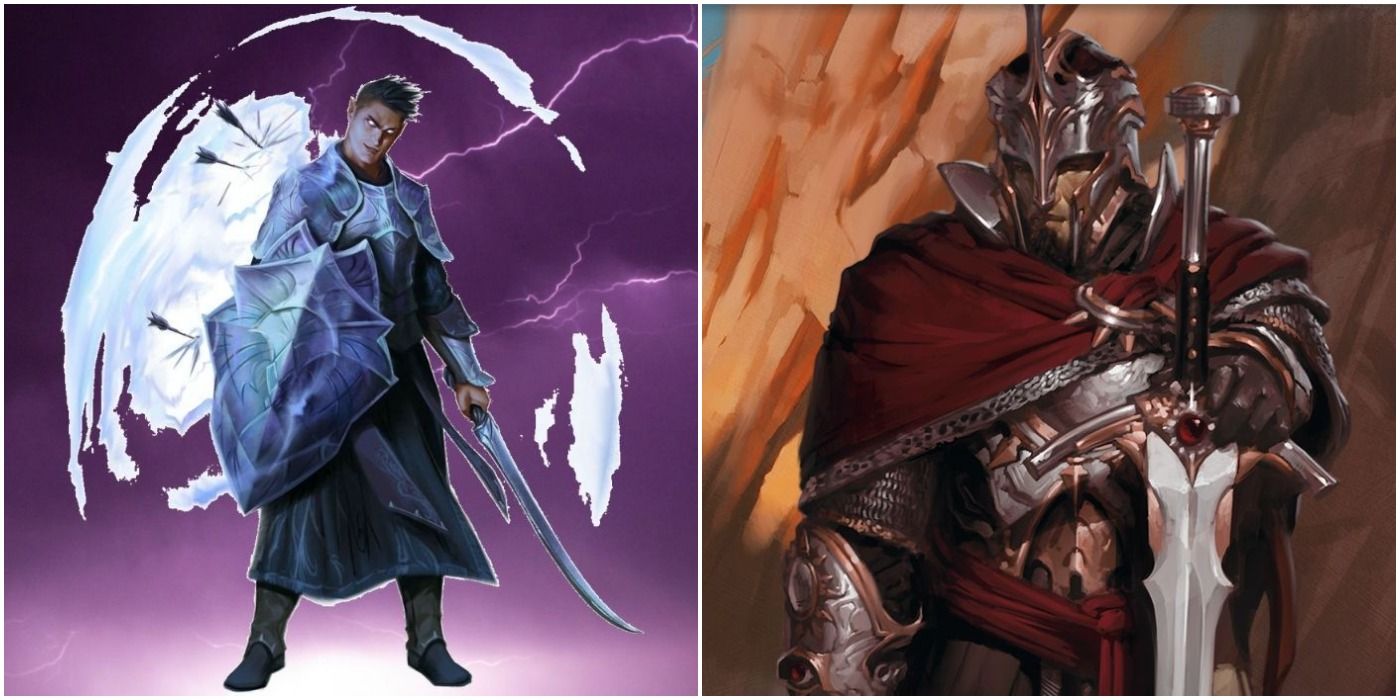
Related
Dungeons & Dragons: The Best Feats For A Fighter
Fighters are the most versatile class in Dungeons & Dragons, so here is a huge list of feats to be the best warrior, protector, or leader you can be.
Piercer will let you re-roll one of the damage dice, and force you to keep the new roll. When you land a critical hit, you’ll roll an additional damage die for your attack, making it hurt a bit more. Slasher will let you decrease the enemy’s movement by ten feet/three meters if you hit them. If you hit someone with a critical strike, they’ll have a disadvantage in all their attacks until your next turn.
8
Dual Wielder
Weapon Mastery Sold Separately
Dual-wielding, in general, suffered quite a few changes, with some being good and others being bad. Still, dual-wielding is overall better than it used to be, and this feat, combined with weapon mastery, makes things even better.
Essentially, when you attack with a light weapon, you can use a one-hand weapon on your offhand to make an additional attack with your bonus action. Normally, dual-wielding already involves attacking again with your bonus action, but if you combine this with the Nick weapon mastery, you can do the first bonus action attack as part of your main action, and this feat will let you use your bonus action to perform another additional attack, increasing your number of strikes to three. It requires a proper build around dual-wielding, but it works.
All that said, the Legacy Dual Wielder is still interesting. It doesn’t come with a +1 to your strength, but it increases your AC by one when dual-wielding, and you can dual-wield any combination of one-handed weapons, which can make things a bit busted if combined with all weapon mastery options.
7
Grappler
Monk’s New Best Friend
- Best Version: New version.
Grappler used to be a rather forgettable feat, but no more. With this feat, you can both cause damage and grapple whenever you do an unarmed strike (though only once per turn). You get to move your grappled opponent without having movement penalties, and every attack you make against your grappled opponent will get an advantage.
This will work better with a class that causes significant damage with unarmed strikes, such as monks or dance bards, but since you’re looking for classes that rely on strength and not dexterity, don’t worry; you can easily do this with a fighter or others by using the Unarmed Fighting Style on them.
6
Great Weapon Master
Hit Harder
- Best Version: New version.
If you don’t want to beat people with your bare hands, you can use the Great Weapon Master instead. It doesn’t come with a +10 damage anymore like the older version, but it also doesn’t come with a -5 penalty on the attack roll, either.
Instead, you’ll get a damage bonus equal to your proficiency bonus per attack made with your action. That, along with the +1 bonus to strength and the additional attack with your bonus action whenever you roll a critical hit or zero someone’s health, make this feat very powerful. It doesn’t have that damage burst it used to, but it keeps rather consistent damage without any penalties.
5
Heavy Armor Master
Boosting Your Damage While Decreasing Damage Taken
- Best Version: New version.
If you want to tank a bit more, Heavy Armor Master is a great choice. Aside from the Strength bonus, every time you get hit with bludgeoning, piercing, or slashing damage, the damage will be decreased by an amount equal to your proficiency bonus.
While that’s only two hit points at first, your proficiency bonus will increase, meaning this damage decrease will improve over time. And, unlike the old version, this damage reduction applies against magical attacks that cause bludgeoning, piercing, or slashing damage – like attacks from a magical sword. Lastly, this is a passive effect, so if you get hit three times, for instance, all attacks will suffer the effect.
4
Mage Slayer
Magic Is For The Weak
Mage Slayer mainly helps you be more of a nuisance to spellcasting enemies. Whenever you trigger a concentration saving throw on an enemy by hitting them, they’ll have a disadvantage on the roll. Plus, once per rest, if you fail an Intelligence, Wisdom, or Charisma saving throw, you can choose to succeed instead – you basically have one use of Legendary Resistance.
This new benefit is more powerful than the old version of Mage Slayer, which simply gives you an advantage in saving throws whenever you’re five feet/1.5 meters away from the caster, and you can even make a melee attack as a reaction when a spell is cast on you. However, the old feat demanded a lot of proper positioning to be used, and most spellcasting enemies will do what they can to be away from you. If you can ensure the spellcaster will always be close to you, the old version is better, though.
3
Mounted Combatant
Paladin’s New Best Friend
- Best Version: New version.
Mounted Combatant remained the same, but we’re counting the new one as better because the old one didn’t have the +1 strength bonus. Essentially, you can make melee attacks at an advantage when you’re mounted; you can force any attack against your mount to target you instead, and if your mount needs to do a Dexterity saving throw, it’ll take half damage on failure and no damage on a success.

Related
Dungeons & Dragons: Best General Feats From The 2024 Player’s Handbook
We rank the feats in the 2024 player’s handbook to help you decide which are the best to invest in for your next character.
While this will require having a large animal companion that may die during the adventure, Find Steed is a great way to keep a consistent mount without leading an animal to death by being with you in combat. Or, if you don’t care about that roleplaying aspect, you can just buy a horse and go for it.
2
Polearm Master
Poke Them From Afar
Polearm Master is a tricky one: it now gets a +1 bonus, and you can use it with pikes and lances (somehow), but it no longer works with Sentinel. This feat has two main perks: you can use your bonus action to attack with the other end of the weapon, which causes 1d4 bludgeoning damage, and you get a reaction attack when someone enters your reach instead of only when they leave it (your reach is ten feet/three meters with these weapons).
Because the reaction attack is no longer worded as an opportunity attack, then it technically can’t work along with the Sentinel feat, which is a highly popular feat combo. If this combo is part of your character concept, we recommend getting the old version, even if it doesn’t come with the +1 Strength bonus. Or you can check with your DM how they want to do it on their table.
All that said, since this isn’t an opportunity attack anymore, in theory, you could trigger this attack even if the enemy is forced to move within your reach, but we admit we’re stretching the wording of each scenario here. Talking to your DM about how they want to do things is still the better option.
1
Sentinel
Go For Their Legs
- Best Version: New version.
Sentinel didn’t suffer the same issue Polearm Master did, with the new version just being better all the way. Along with the bonus, you get to make an opportunity attack whenever an enemy five feet/1.5 meters away from you attacks someone else or uses the Disengage action (using Disengage triggers your opportunity attack, even if they don’t end up moving).
Then, whenever you hit someone with an opportunity attack (regardless of what triggers said attack), their movement drops to zero, meaning they’ll have to stay still or teleport if they want to move. It’s the perfect way to control your enemy’s movement while also hurting them in the process.


